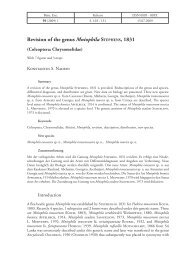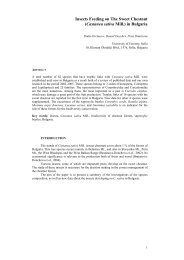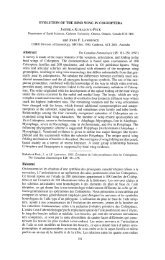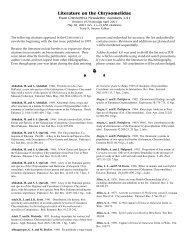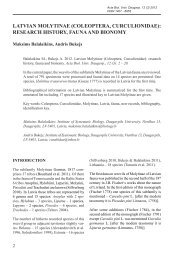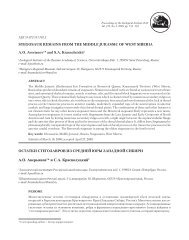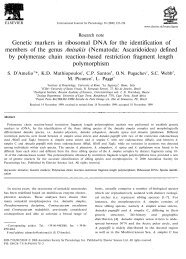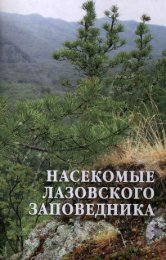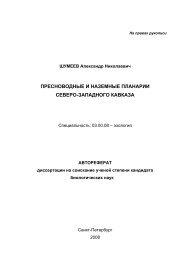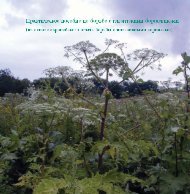Untitled
Untitled
Untitled
Create successful ePaper yourself
Turn your PDF publications into a flip-book with our unique Google optimized e-Paper software.
M.A. Lazarev<br />
area, from Gissar Ridge, Zaisan depression and Altay Mountains<br />
system need further investigation.<br />
The taxons of A. dahli-complex are widely distributed all over<br />
Caucasus. The Central Transcaucasia are occupied by A. d. walteri<br />
with a transition to A. d. dahli in West Georgia and North-East<br />
Caucasus. The Transcaucasian area in Georgia northwards Armenian<br />
A. d. walteri (Gori, Tbilisi, Lagodekhi, Vashlovani) belongs to A. d.<br />
nitidipennis. The populations of A. dahli from Dagestan with<br />
neighbor areas of North Azerbaijan and from South Armenia (Megri<br />
and Goris districts) with neighbor areas of South Azerbaijan are<br />
similar to A. d. nitidipennis because of grey humeral stripes in the<br />
most of specimens, but differs by very dense dorsal pubescence and<br />
strongly distant from each other. Both areas contain own well<br />
pronounced subspecies.<br />
Agapanthia dahli rubenyani ssp. n.<br />
(Figs 1-2)<br />
Type locality. South Armenia, Megri District, mountains above<br />
Shvanidzor, 39°13'N, 46°22'44''E, 1600 m.<br />
Diagnosis. Body black with numerous erect black setae; moderately<br />
long; head with dense yellow pubescence, condensed between<br />
antennae bases; genae about as long as lower eye lobes, densely<br />
covered with yellow pubescence; eyes a little convex, about flat, with<br />
deep notch; the distance between upper eye lobes is about 1.5-2 mm,<br />
the length of frons from 1.3 to 1.9mm; antennae thin, 1 st and 2 nd<br />
joints black, other joints red basally and black distally; reaching<br />
beyond elytral apices with 5 joints in males and 3 joints in females;<br />
red antennal areas with white recumbent pubescence; 3rd antennal<br />
joint with distinct setae tuft; other joints with more or less numerous<br />
semierect setae; prothorax transverse, its width anteriorly: 1.3-2.3<br />
mm, posteriorly: 2.2-3.0 mm; its maximal width behind middle: 2.5-<br />
3.4 mm, prothorax length: 2.5-2.7 mm; pronotal punctation consists<br />
of distinct big dots with fine punctures in between; elytra with<br />
scattered spots of yellow pubescence which can be more or less<br />
numerous; humeri usually with distinct wide stripe of very fine grey<br />
pubescence, which can be sometimes poorly developed or indistinct;<br />
444




